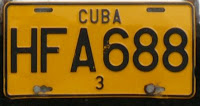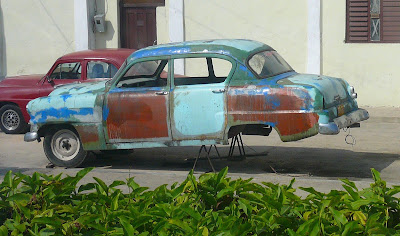My parents went to Cuba and all I got was this ’58 Chevy
Another souvenir that I couldn’t pass up was this wooden replica of a, well, I’m not sure. I see some Chevrolet there, but also some Dodge. Doesn’t matter – I think it's quite handsome. The beach vendor had a fleet of 1950s models – including some I could even identify as Cadillacs – plus some 1930s-era cars. He told me his family carves and assembles these models at home. I’ve since seen many more of these cars offered elsewhere in Cuba, so I guess there are a lot of families just a whittlin’ and glueing. I also learned later it’s a good idea to leave wooden items like this out in the cold garage for a week or two when you get back, just to ensure you aren’t bringing any wood-boring insects into your home. I didn’t. Fortunately, my Chevy-Dodge didn’t seem to have held any passengers.


